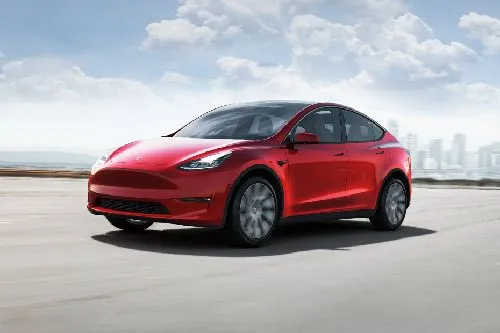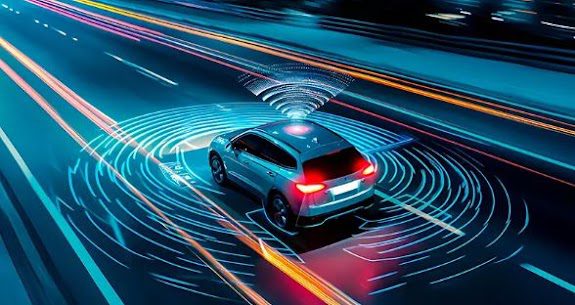
In the rapidly evolving world of automotive technology, the landscape of car design and functionality is undergoing a significant transformation. The integration of cutting-edge innovations and a growing emphasis on sustainability are shaping the future of the automotive industry. This article delves into the future car trends that are set to redefine how we experience driving and interact with vehicles. From advanced electric powertrains to autonomous driving capabilities, the future of cars promises a plethora of exciting developments that will revolutionize transportation.
1. The Rise of Electric Vehicles
One of the most prominent future car trends is the shift towards electric vehicles (EVs). As concerns about climate change and air pollution intensify, the demand for cleaner and more sustainable modes of transportation has grown exponentially. Electric vehicles, with their zero tailpipe emissions and reduced dependence on fossil fuels, offer a compelling solution to these environmental challenges.
Automakers around the globe are investing heavily in EV technology, with companies like Tesla, Nissan, and Chevrolet leading the charge. The advancements in battery technology have significantly increased the range and efficiency of electric cars, making them a viable option for everyday use. Furthermore, the expansion of charging infrastructure is making it more convenient for EV owners to recharge their vehicles, thereby alleviating range anxiety.
The future of electric vehicles is not limited to just passenger cars. There is a growing interest in electric trucks, buses, and even motorcycles. With the introduction of electric trucks like the Tesla Semi and Rivian R1T, the commercial sector is poised to embrace electrification, reducing the carbon footprint of freight and logistics operations. The evolution of EVs is also expected to bring about innovations in battery recycling and second-life applications, further enhancing the sustainability of this technology.
2. Autonomous Driving and Advanced Driver Assistance Systems
Another pivotal aspect of future car trends is the development of autonomous driving technology. Autonomous vehicles (AVs) have the potential to revolutionize transportation by enhancing safety, reducing traffic congestion, and improving mobility for all. Companies such as Waymo, Uber, and Tesla are at the forefront of autonomous vehicle research, testing, and deployment.
Advanced Driver Assistance Systems (ADAS) are already being integrated into many new vehicles, offering features such as adaptive cruise control, lane-keeping assist, and automatic emergency braking. These systems serve as building blocks for fully autonomous vehicles, providing drivers with enhanced safety and convenience. As the technology matures, we can expect to see a gradual transition from Level 2 automation (partial automation) to higher levels, ultimately achieving full autonomy.
The implications of autonomous driving extend beyond personal transportation. Self-driving trucks and delivery vehicles have the potential to streamline logistics and supply chain operations, reducing costs and increasing efficiency. Additionally, autonomous ride-hailing services could offer affordable and accessible transportation options, particularly in urban areas.
3. Connectivity and Smart Cars
In the era of the Internet of Things (IoT), connectivity is becoming a crucial component of modern vehicles. The concept of “smart cars” involves the integration of advanced communication systems that allow vehicles to interact with each other, infrastructure, and the cloud. This connectivity enables a wide range of features, from real-time traffic updates and navigation assistance to remote diagnostics and over-the-air software updates.
One of the key benefits of connected vehicles is the ability to enhance road safety through Vehicle-to-Everything (V2X) communication. This technology allows vehicles to exchange information with other cars, traffic lights, and even pedestrians, reducing the risk of accidents and improving traffic flow. For instance, vehicles can receive alerts about road hazards or construction zones, enabling drivers to take precautionary measures.
Furthermore, the rise of connected cars has opened up new avenues for in-car entertainment and convenience. With integrated infotainment systems, drivers and passengers can access a plethora of apps and services, such as streaming music, navigation, and voice-activated assistants. The seamless integration of smartphones and other devices with the car’s system allows for a more personalized and enjoyable driving experience.
4. The Emergence of Sustainable Materials and Manufacturing
As the automotive industry grapples with environmental concerns, there is a growing emphasis on sustainability in car design and manufacturing. Future car trends include the use of eco-friendly materials, such as recycled plastics, natural fibers, and bio-based composites. These materials not only reduce the environmental impact of vehicle production but also enhance the recyclability of cars at the end of their lifecycle.
Automakers are also exploring innovative manufacturing processes that minimize waste and energy consumption. For example, 3D printing technology is being used to create complex components with less material and waste, while lightweight materials, such as aluminum and carbon fiber, are being incorporated to improve fuel efficiency. Additionally, the shift towards renewable energy sources in manufacturing facilities is helping to reduce the carbon footprint of car production.
The focus on sustainability extends to the development of alternative powertrains, such as hydrogen fuel cells and hybrid systems. Hydrogen fuel cell vehicles (FCVs) offer the potential for zero-emission driving, with water vapor being the only byproduct. Hybrid vehicles, which combine an internal combustion engine with an electric motor, provide a versatile solution for reducing fuel consumption and emissions.
5. Personalization and Customization
In the era of digitalization, consumers are seeking more personalized and customizable experiences, and the automotive industry is no exception. Future car trends are increasingly focused on offering tailored solutions to meet the unique preferences and needs of individual drivers. From exterior design options to interior features, car manufacturers are providing a wide range of choices for buyers to customize their vehicles.
One of the most notable advancements in this area is the use of digital interfaces and displays. With the rise of digital dashboards and touchscreens, drivers can personalize their in-car experience, from adjusting climate control settings to selecting music playlists. Moreover, advancements in artificial intelligence and machine learning are enabling vehicles to learn and adapt to the preferences of their occupants, offering a more intuitive and seamless experience.
The trend towards personalization is also evident in the growing popularity of subscription-based services and flexible ownership models. These services allow consumers to access a variety of vehicles on-demand, giving them the freedom to choose the right car for different occasions. Whether it’s a sleek sedan for a business trip or an SUV for a weekend getaway, subscription services offer a convenient and cost-effective alternative to traditional car ownership.
6. The Role of Artificial Intelligence in Automotive Innovation
Artificial intelligence (AI) is playing an increasingly important role in the automotive industry, driving innovation in various aspects of car design, manufacturing, and user experience. Future car trends include the integration of AI-powered systems that enhance vehicle performance, safety, and convenience.
One of the key applications of AI in the automotive sector is in autonomous driving. AI algorithms are used to process data from sensors, cameras, and other sources to enable vehicles to perceive their environment and make decisions in real-time. This technology is critical for the development of fully autonomous vehicles, as it allows them to navigate complex traffic situations and respond to dynamic road conditions.
In addition to autonomous driving, AI is also being used to enhance the overall driving experience. For example, AI-powered voice assistants can provide drivers with real-time information, such as weather updates, route suggestions, and nearby points of interest. These assistants can also control in-car systems, such as entertainment and navigation, making it easier for drivers to stay focused on the road.
Moreover, AI is being utilized in predictive maintenance, where machine learning algorithms analyze vehicle data to predict potential issues before they occur. This proactive approach to maintenance can help prevent breakdowns, reduce repair costs, and extend the lifespan of vehicles.
7. The Impact of 5G on Automotive Connectivity
The advent of 5G technology is set to revolutionize the automotive industry by enabling ultra-fast, low-latency communication between vehicles and infrastructure. Future car trends will be significantly influenced by the deployment of 5G networks, which will enhance the capabilities of connected and autonomous vehicles.
One of the most significant benefits of 5G is its ability to support real-time V2X communication, which is crucial for the safe and efficient operation of autonomous vehicles. With 5G, vehicles can exchange data with other road users, traffic signals, and cloud-based systems at unprecedented speeds, enabling them to react quickly to changing conditions. This technology will be instrumental in the development of smart cities, where connected vehicles can seamlessly interact with intelligent transportation systems.
In addition to safety and traffic management, 5G will also enhance the in-car entertainment experience. Passengers can enjoy high-definition video streaming, immersive virtual reality, and other data-intensive applications without interruptions. Furthermore, 5G will enable advanced features such as remote vehicle diagnostics and over-the-air software updates, providing a more convenient and connected driving experience.
8. The Future of Urban Mobility
As cities around the world face growing challenges related to congestion, pollution, and limited space, the concept of urban mobility is undergoing a transformation. Future car trends are focused on developing innovative solutions that address these challenges and create more efficient, sustainable, and accessible transportation systems.
One of the key trends in urban mobility is the rise of shared and on-demand transportation services. Ride-sharing platforms, such as Uber and Lyft, have already revolutionized the way people move around cities, offering a convenient alternative to private car ownership. The future of urban mobility is expected to see further integration of shared services, including car-sharing, bike-sharing, and electric scooter rentals. These services provide flexible and cost-effective options for short-distance travel, reducing the need for personal vehicles.
Another important aspect of urban mobility is the development of multi-modal transportation systems. This approach involves integrating various modes of transport, such as buses, trains, and bicycles, into a seamless network that allows for easy transfers and optimized routes. The use of digital platforms and mobile apps will play a crucial role in coordinating these systems, providing users with real-time information and route planning.
In conclusion, the future of the automotive industry is being shaped by a multitude of trends and innovations that promise to transform the way we think about transportation. From the rise of electric and autonomous vehicles to the integration of AI and 5G technology, the future car trends are driving significant changes in car design, manufacturing, and user experience. As we look ahead, it is clear that the automotive landscape will continue to evolve, offering exciting new possibilities for a more connected, efficient, and sustainable future.
In this era of rapid technological advancement, staying informed about the latest developments and trends in the automotive industry is more important than ever. For those interested in exploring the future car trends, there are numerous resources available, including industry reports, expert analyses, and online platforms like autocard.my.id. By keeping up with these trends, consumers and businesses alike can make informed decisions and stay ahead of the curve in the ever-changing world of automobiles.







